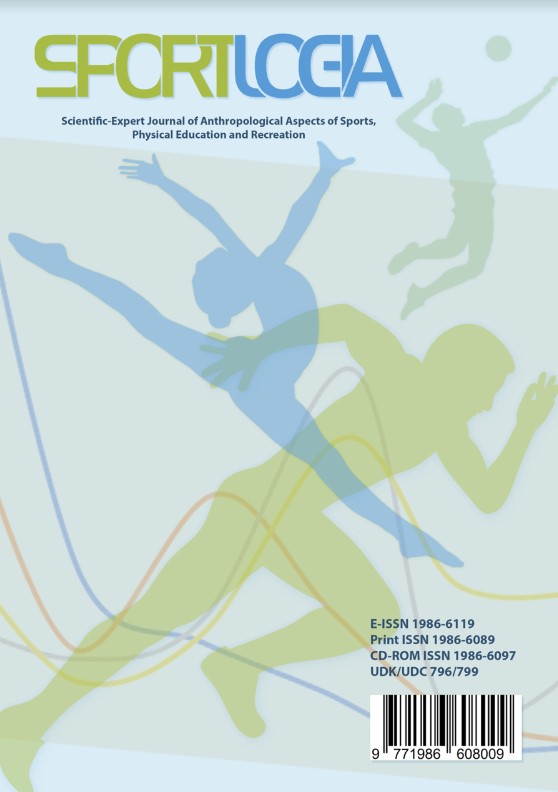Correlation of Morphological Characteristics with Police Specific Fitness Test in Police Students
DOI:
https://doi.org/10.7251/SGIA2420048JAbstract
This research delved into the potential correlation between morphological characteristics and the performance in a police specific physical ability test (PSPAT) among students at the University of Criminal Investigation and Police Studies. Of the 362 third-year students, 164 were female and 198 were male. The study assessed seven morphological traits: body height, body mass, body mass index, body fat, skeletal muscle mass, and their respective percentages. Body composition details were obtained using a multi-channel bioelectric impedance analyser. The Pearson correlation analysis was employed to understand the relationships between these features and the PSPAT outcomes. Results revealed that for female students, body fat, skeletal muscle mass, and their percentages significantly impacted their PSPAT performance. Male students, on the other hand, showed correlations with body fat and its percentage, but not with skeletal muscle mass. Interestingly, there were no significant associations between test results and body height, weight, or body mass index for all subjects. These insights emphasize the crucial role body composition plays in the physical capacities of police students, particularly focusing on the balance of muscle and fat content. This study's findings can inform future student selection, training methods, and the importance of comprehensive body composition assessments.
